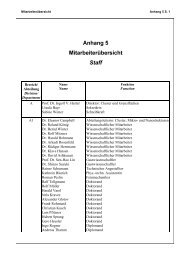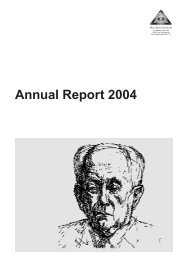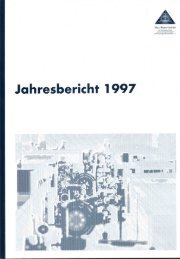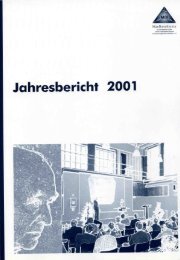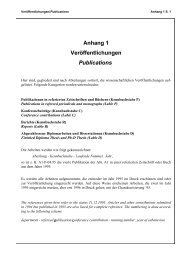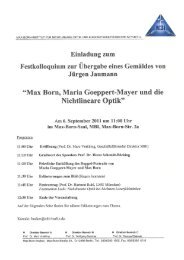Create successful ePaper yourself
Turn your PDF publications into a flip-book with our unique Google optimized e-Paper software.
ge numbers.<br />
A graduate student, Nicola Begent, and I borrowed a method from neurophysiology to make<br />
thrombi grow in blood vessels. This was to apply a platelet-aggregating agent to the outside<br />
of a vessel by micro-iontophoresis [42-47]. Thrombi consisting entirely of platelets grew inside<br />
the vessel on its walls. The exponential growth rate depended in a complex but understandable<br />
way on the blood flow. Many thousand of platelets were involved, so that these were statistical<br />
measurements. Peter Richardson has now developed a computer model for following<br />
the movements of 50,000 individual platelets in such a model. This is an example of what can<br />
be done nowadays to get at individual cell behaviour in complex situations (Begent and <strong>Born</strong>,<br />
1970; Richardson, 2004). Ultimately perhaps, biological methodology may come up against the<br />
very limits exposed by quantum mechanics.<br />
The victory won by statistical thinking in science could bring incalculable benefits to far distant<br />
spheres, because to my mind by far the most important intellectual legacy of <strong>Max</strong> <strong>Born</strong> was<br />
Fig. 48<br />
Extract from Lindau conference<br />
lecture handwritten by <strong>Max</strong><br />
<strong>Born</strong>.<br />
<strong>Max</strong> <strong>Born</strong> • Gustav <strong>Born</strong> 25



